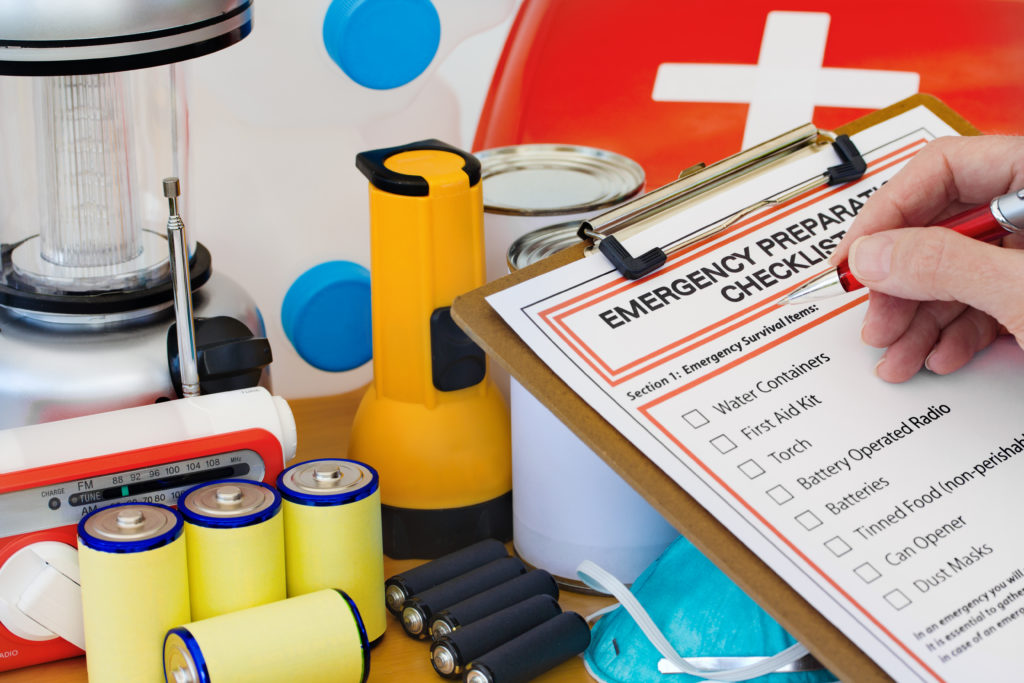As of September 8th, 2016, the Centers for Medicare and Medicaid Services (CMS) enacted rules and regulations for Medicare and Medicaid facilities and suppliers to develop and implement emergency preparedness plans.
This regulation was put in place to protect FQHCs, facilities that accept Medicaid/Medicare, and their patients in the event of disasters such as earthquakes, floods, active shooters, biohazards, winter storms, hurricanes, tornados, and more. This ruling required that these facilities have an disaster plan that could pass a hazard vulnerability analysis or HVA, and facilities are compliant with disaster preparedness regulations by November 15th, 2017, specifying that plans:
- Establish clear steps as to what to do in the event of a natural disaster.
- Include the training of staff on new preparedness regulations.
- Address the needs of patients including that facilities procure supplies necessary for survival.

The Four Elements of Emergency Preparedness
When developing HVA rules and regulations for your facility, there are four core aspects to consider that can help to ensure you remain in compliance. In developing these plans, it is crucial to gather a committee on disaster preparedness in order to have input from a variety of people in the organization who have the authority to act and are capable of fulfilling expected roles and responsibilities.
Develop an Emergency Plan
The first, and potentially most essential element of emergency preparedness is the development of the emergency protocol itself. During the development of a plan, there are key characteristics to outline and prepare for, these include:
- Mitigation: What the plan is intended to prepare for and protect patients against.
- Preparedness: The tools and resources needed to react to the disaster and reduce potential damages.
- Response: How your facility will take action to react to the disaster.
- Recovery: How your facility will return to normal after the disaster.
Visit the CDC, FEMA, and the U.S. Department of Health and Human Services (HHS) for a wealth of knowledge on how to develop an effective plan for different scenarios.
Establishing Set Policies and Procedures
Once you have a plan in place, it is important that you establish set procedures for your staff to follow. Establishing clear protocols on evacuation procedures, proper supplies to have in an emergency kit, and how to assist patients in the midst of a disaster can all play a huge role in ensuring the safety of everyone in your facility. While disasters can be unpredictable, effective pre-planned policies can help your facility react to even the most unexpected events.
Communicating Emergency Protocols to Staff
During an emergency, confusion can exacerbate damages, so effectively communicating your facility’s disaster response plan to staff ensures greater organization and reduces the risk of further damages. Be sure to inform colleagues and staff of the scenarios that the plan prepares for, the procedures that will be put into place to support the plan, and the leadership that will be responsible for executing the plan if the situation were to ever arise. Conducting an internal preparedness program that goes over these scenarios and outlines steps to take in the face of an emergency can be a vital part of the communication process.
Testing Plans in Training Scenarios
The final element of any emergency preparedness plan is to thoroughly test your detailed training scenarios. Running regularly scheduled drills of your disaster plan can ensure that your staff is adequately informed of the plan set in place and are confident in executing the plan when a crisis arises. Conduct regular drills of different emergency scenarios including hurricane, fire, biohazard, flood, active shooter, and more. A number of U.S. government agencies provide a wealth of resources on the subject of emergency preparedness planning including the CDC, FDA, and FEMA.
How CNECT GPO Can Assist in Emergency Management and Preparedness
CNECT is a group purchasing organization (GPO) that can assist in gathering the resources and materials necessary to develop, train for, and execute your emergency preparedness plan. Through our comprehensive roster of over 2,400 contracts from industry-leading suppliers, we’ll give you access to savings opportunities and supply-chain optimization strategies that can ensure your disaster plans are adequately sourced. As a member, you’ll also be granted access to exclusive educational webinars and weekly newsletters that cover a broad range of topics including disaster preparedness. Contact a CNECT representative today to learn more about becoming a member.